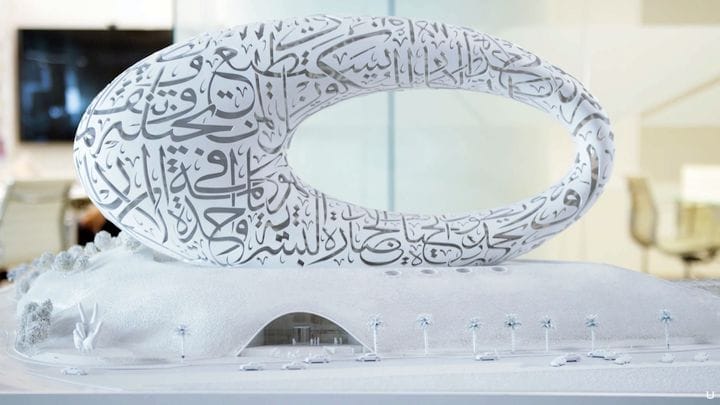![3D print of the Dubai Museum of the Future [Source: Ultimaker]](https://fabbaloo.com/wp-content/uploads/2020/05/killa-design-museum-of-the-future_img_5eb09088e922b.jpg) 3D print of the Dubai Museum of the Future [Source: Ultimaker]
3D print of the Dubai Museum of the Future [Source: Ultimaker]
There are plenty of uses of 3D printing, and one of them is for design feedback.
The most frequent use of 3D printing is prototyping, in which a proposed model of the final design is produced and tested. The testing can take many forms, from mechanical to aesthetic, and this approach has been very successful for many product companies.
Today you’ll typically see desktop 3D printers in product design companies for this exact purpose. It’s faster, cheaper and allows for more iterations.
Design Feedback With 3D Printing
![Killa Design 3D prints building models for design feedback [Source: Ultimaker]](https://fabbaloo.com/wp-content/uploads/2020/05/killa-design-museum-of-the-future-buildings_img_5eb0908948dd3.jpg) Killa Design 3D prints building models for design feedback [Source: Ultimaker]
Killa Design 3D prints building models for design feedback [Source: Ultimaker]
But another use that I suspect will begin to take on more prominence is design feedback. This is the idea that you’re not producing a proposed final product, but instead a representation of the design. This item can then be used for obtaining feedback.
It’s subtly different from prototyping where you’re trying to make the actual item. Here we’re simply reviewing the shape and design of something that will be made in a very different way.
Architectural 3D Print Case Study
There’s a wonderful case study of this approach just published by Ultimaker. They partnered with a Dubai-based architectural firm that produces designs for the most incredible buildings and structures. Actually, I sometimes cannot distinguish some of their designs as buildings or structures due to their highly unusual and complex nature.
![The Dubai Museum of the Future, the world’s most complex building? [Source: Ultimaker]](https://fabbaloo.com/wp-content/uploads/2020/05/killa-design-museum-of-the-future-complexity_img_5eb090898ff7f.jpg) The Dubai Museum of the Future, the world’s most complex building? [Source: Ultimaker]
The Dubai Museum of the Future, the world’s most complex building? [Source: Ultimaker]
Killa Design is the firm in question, and one of their designs was the incredibly complex Museum of the Future. Apparently this building was voted as the “most complex building in the world”.
I don’t doubt that, after looking at the design. It does not look like a building in the slightest. It seems to be a kind of oval shape, somehow lying on a street. The design is so unusual that you cannot register its actual size. At first it appears to be a small sculpture, but then you learn that it is actually 85m tall and 140m in length!
Unusual Designs Require Unusual Methods
This highly radical design requires special attention by those creating its shape, and Killa Design has decided to use desktop 3D printers to accomplish this feedback. They have been iteratively 3D printing design models and handling them for feedback.
To understand this, consider that a “normal” building has straight and flat sides. We assume this is the case naturally and don’t need to think about that much, as we would be concerned with other matters like the overall shape.
![Killa Design marking up a 3D print to provide design feedback [Source: Ultimaker]](https://fabbaloo.com/wp-content/uploads/2020/05/killa-design-museum-of-the-future-touch_img_5eb09089d80f2.jpg) Killa Design marking up a 3D print to provide design feedback [Source: Ultimaker]
Killa Design marking up a 3D print to provide design feedback [Source: Ultimaker]
But in such a strange non-flat design one must be concerned with the shape of the surfaces. They’re not flat, but are they what they should be? This is only truly knowable by visually — and tactically — inspecting a representative 3D print of the design.
Design Feedback Video
That’s exactly what Killa Design is doing in their work on the Dubai Museum of the Future. Here Ultimaker has posted a video of their process:
It’s quite fascinating to see exactly how designers go about obtaining this type of design feedback using 3D prints. They touch, feel and observe the models. They physically annotate the models to help make adjustments and corrections.
In a world where the unusual is rapidly becoming the routine, it is highly likely we will see much more of this design practice unfold in studios around the world.
Via Ultimaker

